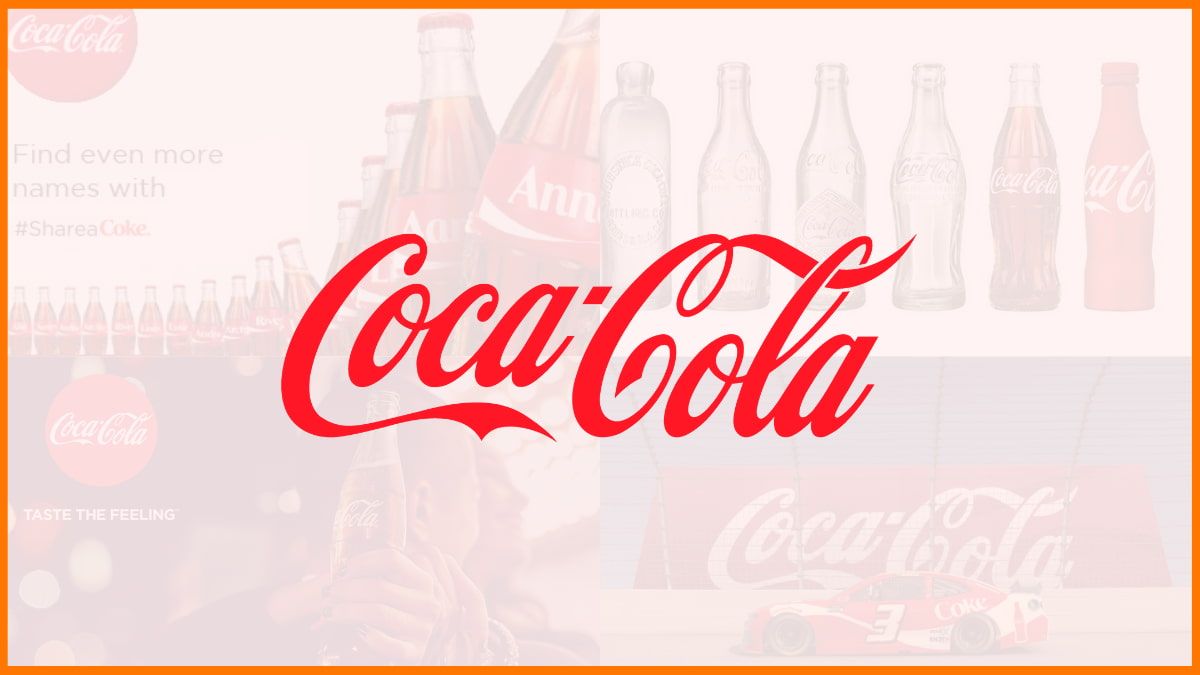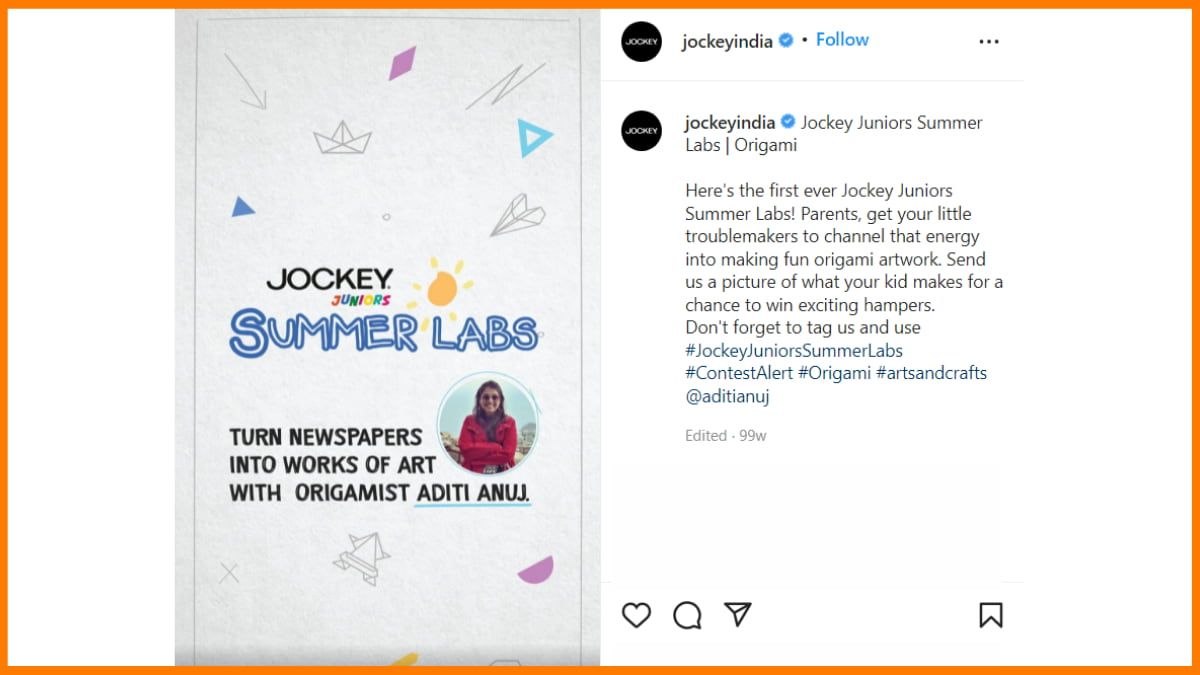Jockey International was founded in the year 1876 in Ludington, Michigan, the United States of America by Samuel T. Cooper and his Sons as a hosiery manufacturer. Soon his sons took over the business and established their new headquarters at Kenosha, Wisconsin, which is at a distance of roughly 305 miles from Ludington, and also started manufacturing union suits and became one of its largest sellers in America by the 1930s. It also started adapting the name “Jockey” as it indicated athleticism and flexibility.
In 1934, they introduced their most famous brand in the V-Shaped briefs and this spread all over America like a rage. By the 1950s, they gradually started to make underwear for women by the name of “Jockette”. In 1972, they changed their name from “Cooper & Sons” to Jockey International Inc.
In the years to come, they would expand their presence worldwide to every nook and corner of the world. They entered the Indian market briefly in the 1970s, but they soon quickly left and returned to post-liberalization India in 1994.
They came to India through an agreement with Page Industries Ltd, founded by Sunder Genomal and brothers, and Page Industries soon became the single largest licensee for Jockey International in the years to come. Jockey established its first store in India on Commercial Street, Bengaluru.
Let’s take a look at the different marketing strategies of Jockey International, their pricing strategy, product strategy, advertising strategy, and more in detail:
Jockey Marketing Strategy
Jockey Pricing Strategy
Jockey Product Strategy
Jockey Advertising Strategy
Jockey Major Marketing Campaigns
Jockey Social media Marketing Strategy
Jockey Covid-19 Marketing Strategy
Jockey Marketing Strategy
Jockey’s marketing strategies can be roughly divided into two eras, before the 1980s, and after the 1980s. Before the 1980s, they were promoting how wearing Jockey is a symbol of athleticism, machismo.
They wanted to show that wearing a Jockey meant you were someone tough as nails. But after that period, they realized that they alienated a huge potential market in the common man who wants to wear innerwear for more of a basic utility purpose, and thus from then onwards, their marketing strategies focused on promoting Jockey as something open to anyone, which is fashionable to wear for everyone.
Jockey also started focusing more on women’s innerwear when they started their iconic “Jockey for Her” campaign in 1982 in which they showed that they even care about the comfort for women and thus they also want women to say proudly to the world they wear Jockey.
This can be seen by the fact that how before the 1980s, Jockey aggressively promoted themselves with athletic personalities(especially baseball players) in Babe Ruth, Yogi Berra, Jim Palmer. But after that period, their advertisements have focussed more on the common man, the average school-going kid, the woman who while being a mother to her two kids, is also the executive president to a firm, and so on.
This strategy is one of their main reasons for the success of the Jockey brand amongst Indian women when they re-entered the market in 1994 as unlike other brands, who kept it to the confines of the store’s basement as something to be shameful, Jockey spoke to retailers all over India to keep them in their store’s forefront. This helped a lot in breaking the stereotype that innerwear is something to be shameful for amongst Indian women in all age groups.
Jockey Pricing Strategy
Jockey has always focused on the middle-class sections of the society all over the world as their main market and has hence kept prices at a rate that is affordable once someone climbs up in the social-economic ladder.
This worked wonders in countries like India where, with the liberalization reforms in 1991, a lot of people reached middle-class status or even beyond that with the new jobs added due to it. Jockey is thus seen as a symbol of the middle-class populace as a whole. The price of their product ranges from Rs 499 to Rs 999.
Jockey Product Strategy
Jockey’s most famous product is its V-Shaped brief underwear which they first launched in Chicago in 1935 and it became a huge success there. Since then it has been their trademark product and they have sold variations of that depending on the time they were in worldwide.
They have also been loyal to their roots in the various shorts and socks they manufacture and have also started making a lot of T-shirts with simple designs for household purposes in multiple colours.
For women, they have specifically designed and manufactured bras and lingerie so they feel comfortable in wearing them. They have also launched a separate product line for kids in innerwear, shorts, skirts, and so on.

Jockey Advertising Strategy
Jockey has always been one of the strongest proponents of extracting the power of advertisements, could be through billboards located on the major roads of a city or through television advertisements.

They realized the power of visual advertisements as early as 1911 when they published an advertisement in the Saturday Evening Post.
In various television advertisements, they have taken the help of public relations firms like L&K Saatchi & Saatchi, DDB Mudra Group, etc.
They also have a strong presence in the digital marketing space where they promote their campaigns using catchy hashtags to attract public attention. These hashtags can mainly be seen on social media platforms like Facebook and Instagram.

Jockey Major Marketing Campaigns
Just Jockeying

In 2009, Jockey made eleven advertisements across various newspapers with the message “Just Jockeying”. Here, they wanted to show that Jockey just isn’t underwear but a way of life. This struck a chord with the younger populace worldwide.
Jockey Or Nothing
Launched in 2012, these advertisements were sent out to make people talk about the product without making it the center of attention. In these advertisements, the main protagonist of the advertisement is in which they have to choose between two alternatives with no compromise.
For this campaign, they launched a series of advertisements. Here, a woman goes on a long-distance trip with her dog and thus demonstrates her “unconditional love”, while she could have never shown her love and thus “nothing” in the first place.
They have launched various advertisements as part of this campaign throughout the 2010s.
Redefining Comfort

In 2013, they launched their marketing campaign by the name “Redefining Comfort” in collaboration with famous stylist and fashion icon Rachel Zoe to show their more glamorous side and thus evoke the spirit of the modern woman who is not afraid of anything in life. They also used headlines such as “Comfort Just Got Sleek,” “Comfort Just Got Flirty,” etc.
Show Em What’s Underneath
As part of their new brand campaign in “Show Em” in 2016, Jockey launched a series of TV advertisements by the name of “Show Em What’s Underneath”. In these advertisements, they promoted the idea that they should be proud of wearing Jockey underwear and show that with pride no matter what problems you have in life. This is “a reflection of the values they are associated with and illustrate who they are” according to Mark Fedyk, their Chief Operating Officer.
In these advertisements, Jockey celebrates the contributions of unsung heroes such as Chris Van Etten, the army veteran who lost his leg in a war, or Lisa Cumiaso, a female firefighter who has to risk her own life to save others, and so on.
KnowsMe
This campaign was launched in 2018 to strengthen Jockey’s dominant position in the women’s innerwear category with their new range of lingerie. #KnowsMe aims to show how Jockey can help the self-assured, modern woman to break the various stereotypes associated with a woman.
They wanted to promote the idea that, in the end, Jockey is just one of their friends who wants to see them succeed in all aspects of life.
To promote this, they have collaborated with social media influencers. They picked Instagram influencers, Ankita Kumar & Sharanya Iyer, to pack their bags and travel in a caravan through the seven Northeast states based in India.

Here, Jockey Woman was acting as a friend, checking in and commenting on pictures, just like how their friend would be.
Feels Like Jockey
In 2019 they launched a campaign with the name “Feels Like Jockey” in which they launched a series of advertisements where a young woman or a young man dancing in their imagination, to the cult Nina Simone song of Feelin Good and showed how comfortable they were in that innerwear. To promote this on other social media platforms, they used the hashtag #FitsLikeASong.
Not Just for Pros
In August 2020, Jockey Move is built on the idea that fitness is not just for persons with a strong athletic build, but also for the everyday fitness enthusiast, who indulges in small routine exercises to improve his fitness and get a break from his monotonous work life.
Jockey said. “The campaign line ‘Not Just for Pros’ articulates this essence and the films feature everyday fitness enthusiasts going about their routine workout.”

Jockey Social media Marketing Strategy
Their recent social media campaign in November 2021 by the hashtag #BraAsVersatileAsIAm helps to associate with the various moods of modern women and they have bras to support all of those.
Jockey wanted to break the perception that Jockey only offers bras for sportswear and they offer bras for everyday purposes first and foremost.
For this, they collaborated with creative tech studio AliveNow to launch a game to promote its range of multiple bras for household purposes and where women can test the fit of the bra virtually by giving their entry sizes.

Jockey Covid-19 Marketing Strategy
One of the marketing campaigns Jockey has taken initiative with the onset of the pandemic is by targeting the kids who have been affected by schools being shut and thus staying home in the summer.
They have launched a campaign named #JockeyJuniorsSummerLabs, where they launched virtual summer camps in the art and craft domain for kids to showcase their talents and thus also promote their products.

Conclusion
Here is a brief story of how Jockey has managed to market its brand through various strategies. This has paid rich dividends for Jockey International, as Jockey has one of the biggest worldwide media presence in the innerwear market.
It has also paid from an Indian Perspective as Page Industries, the sole licensee of Jockey on the Indian subcontinent crossed the 100 crore rupees sales mark in 2005 and had a successful Initial Public Offering (IPO) in 2007.
FAQs
What are some of the marketing strategies employed by Jockey?
Social media marketing, Billboard advertising, and Television commercials are some of the marketing strategies employed by Jockey.
Who is the founder of Jockey?
Samuel T. Cooper founded Jockey in 1876.
Who is manufacturing Jockey in India?
Page Industries Ltd has the license to manufacture, distribute and market Jockey.









